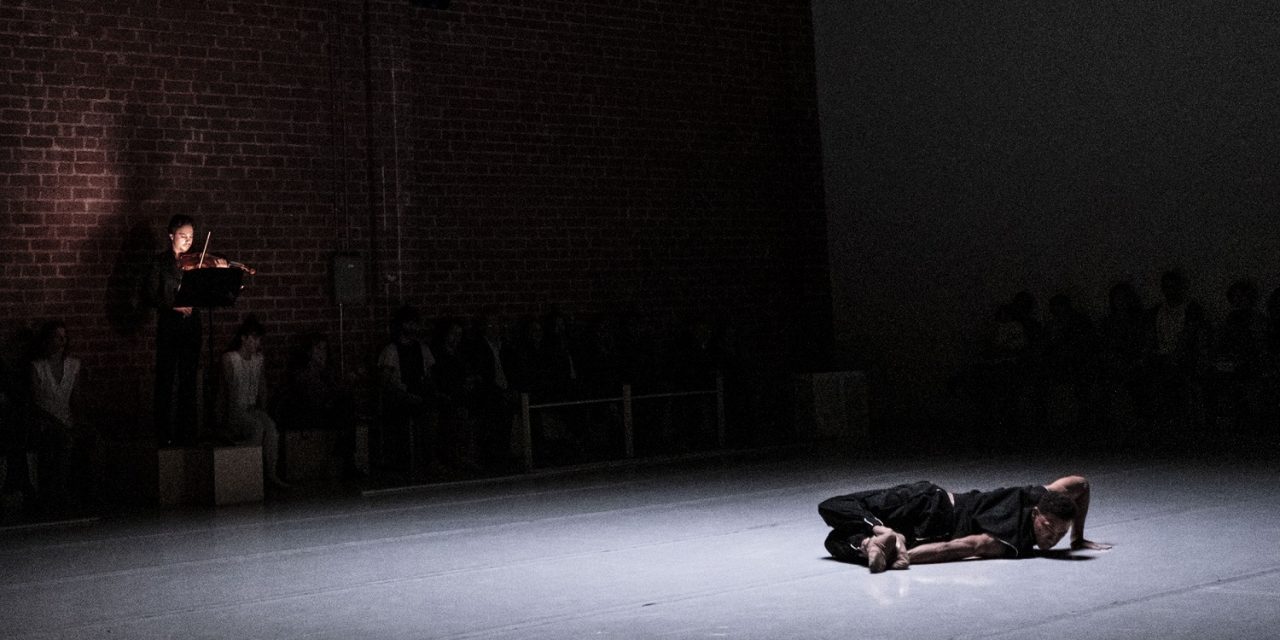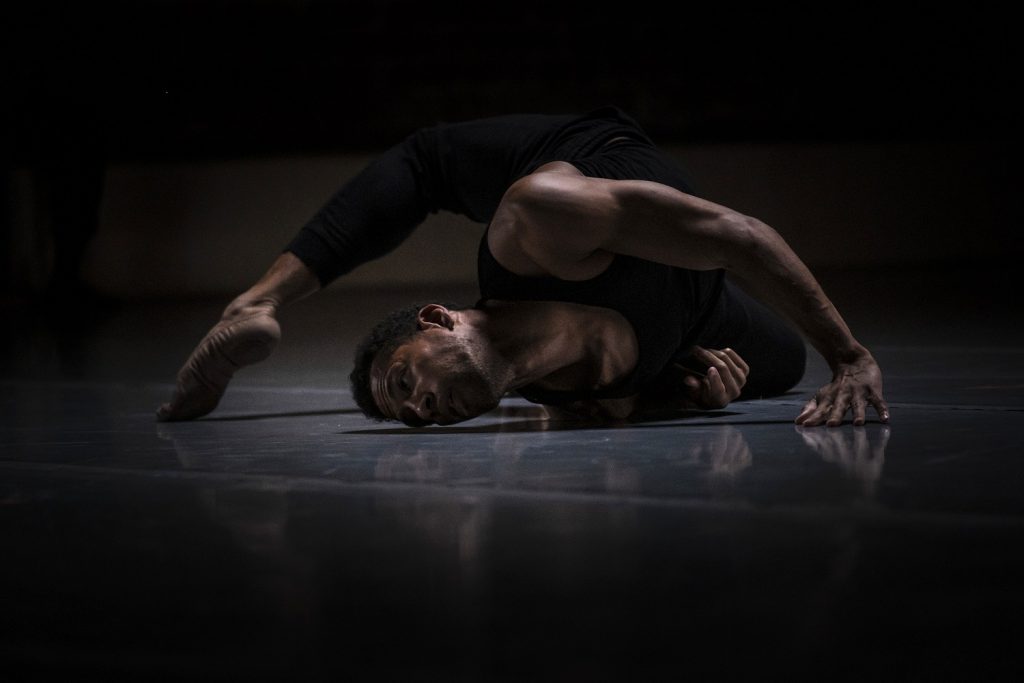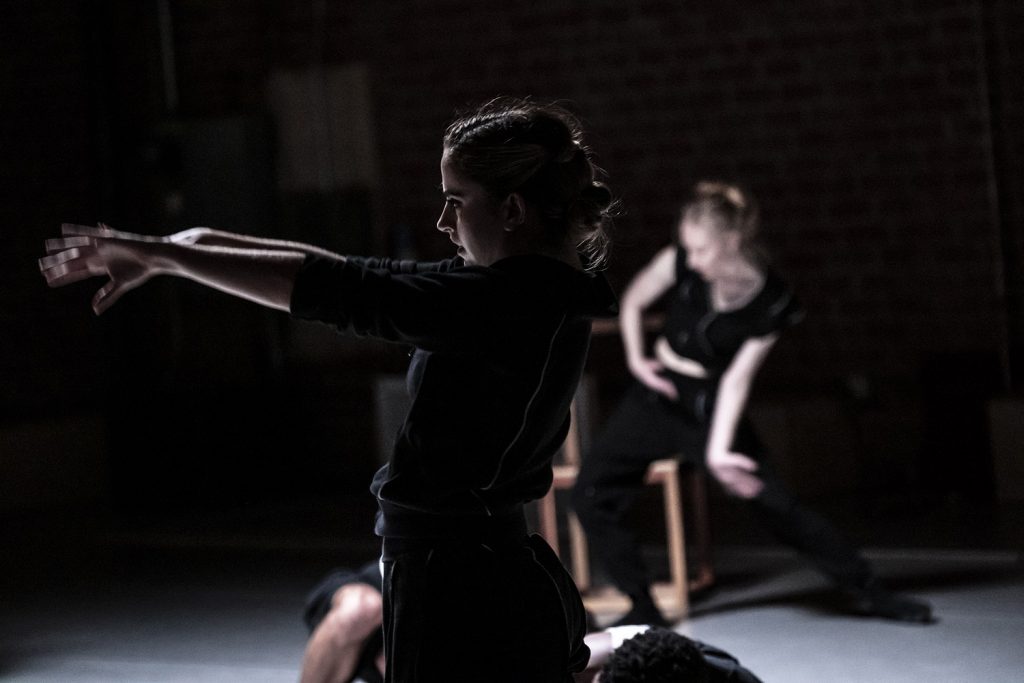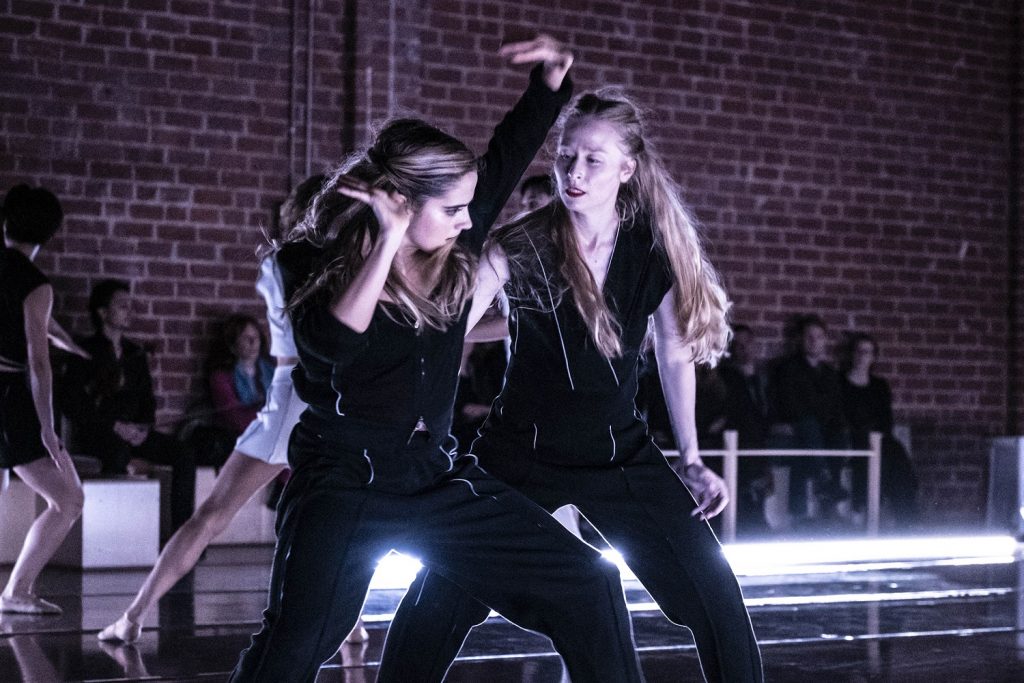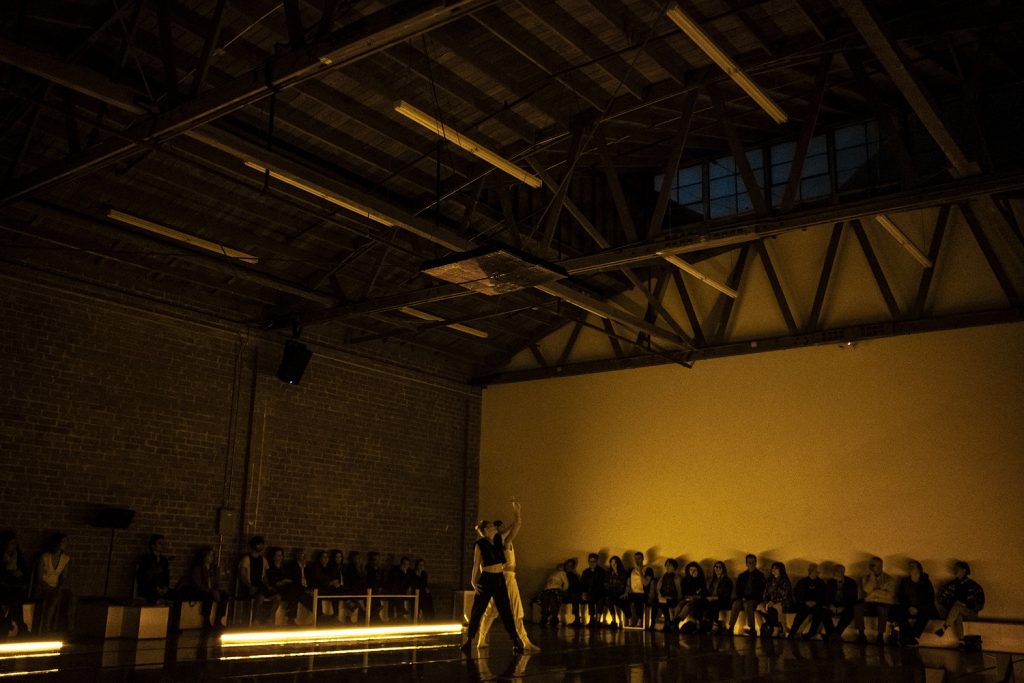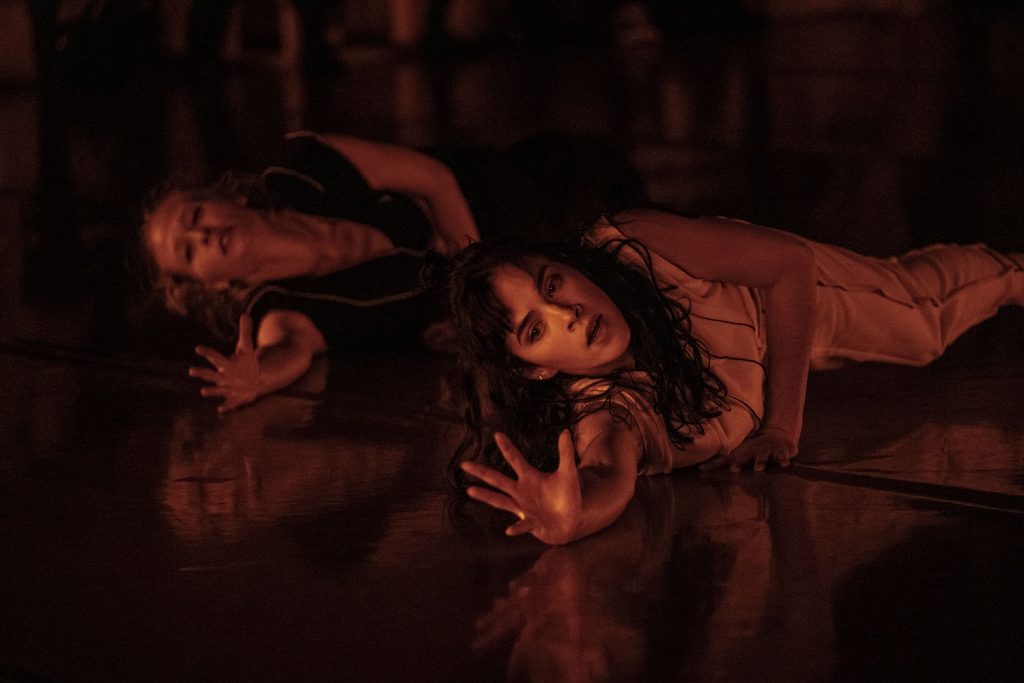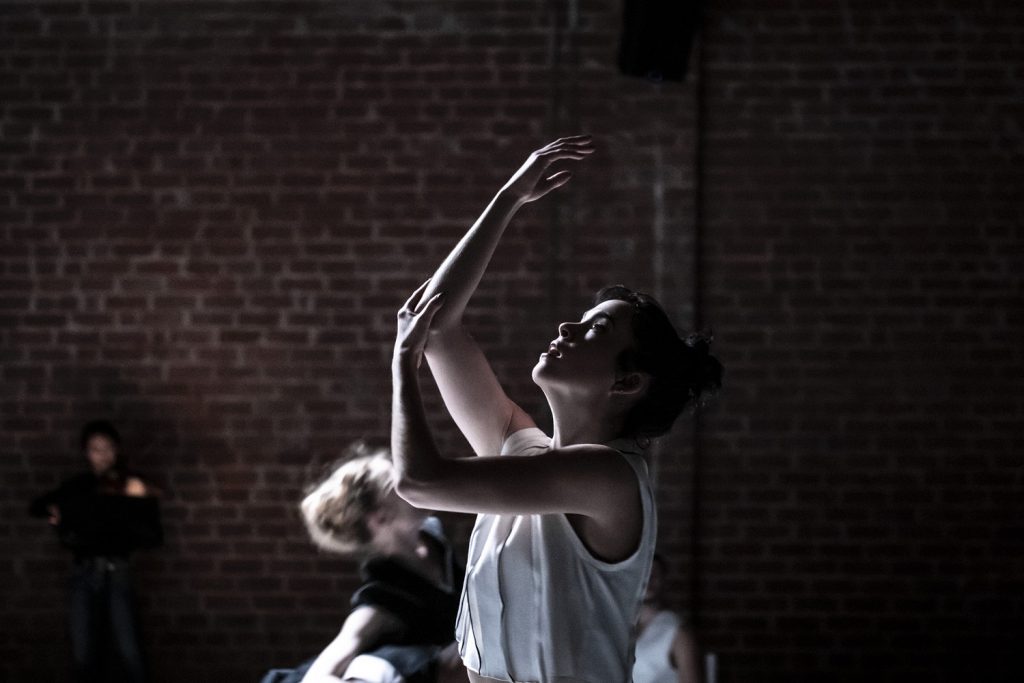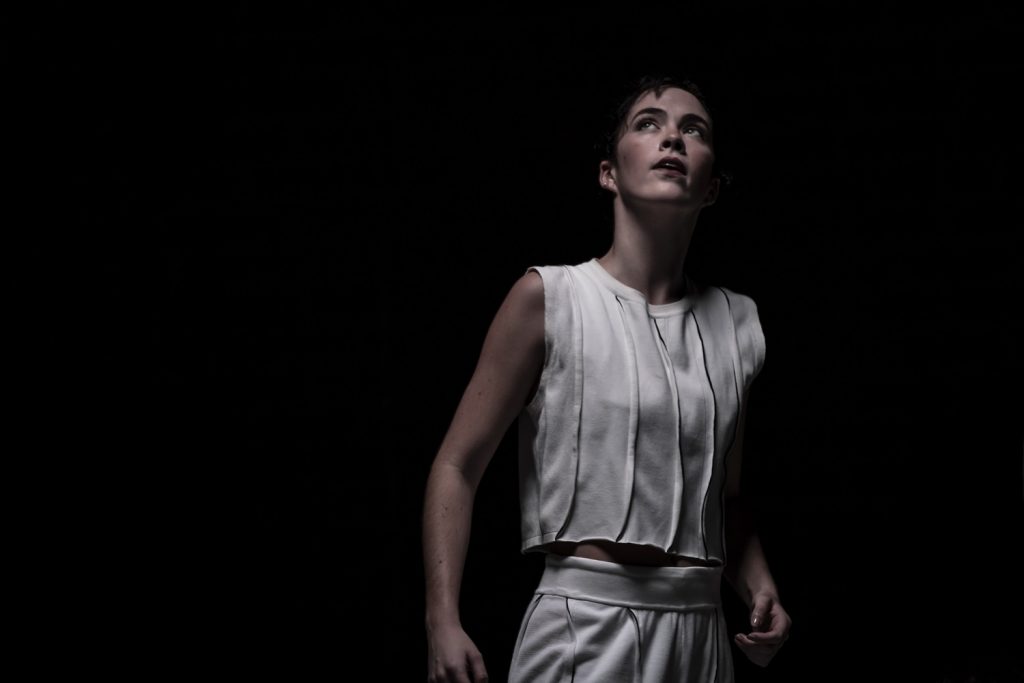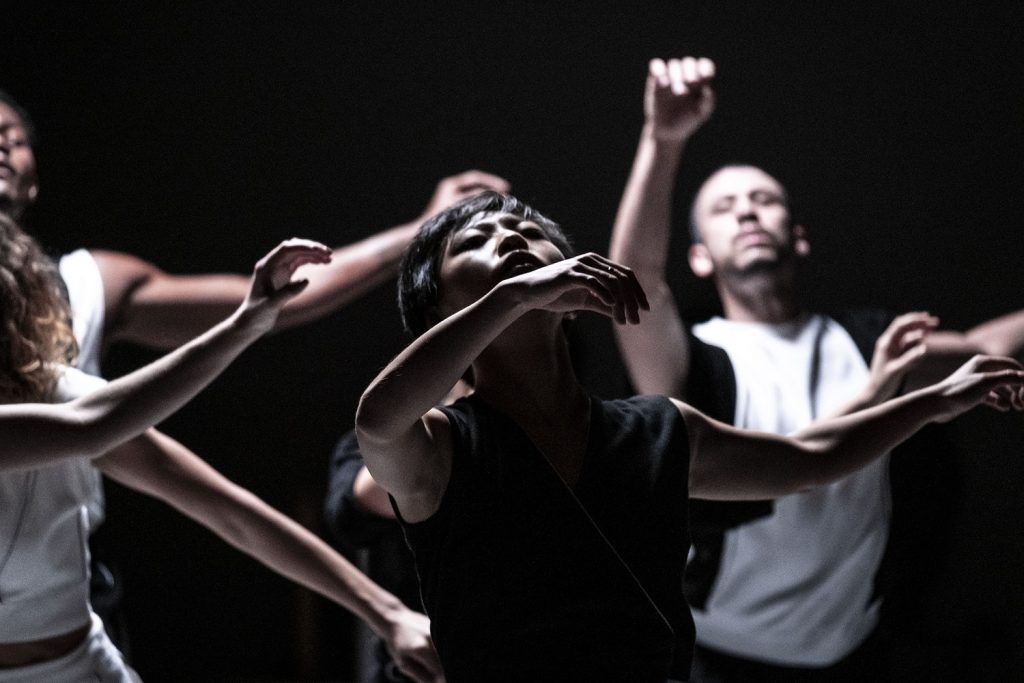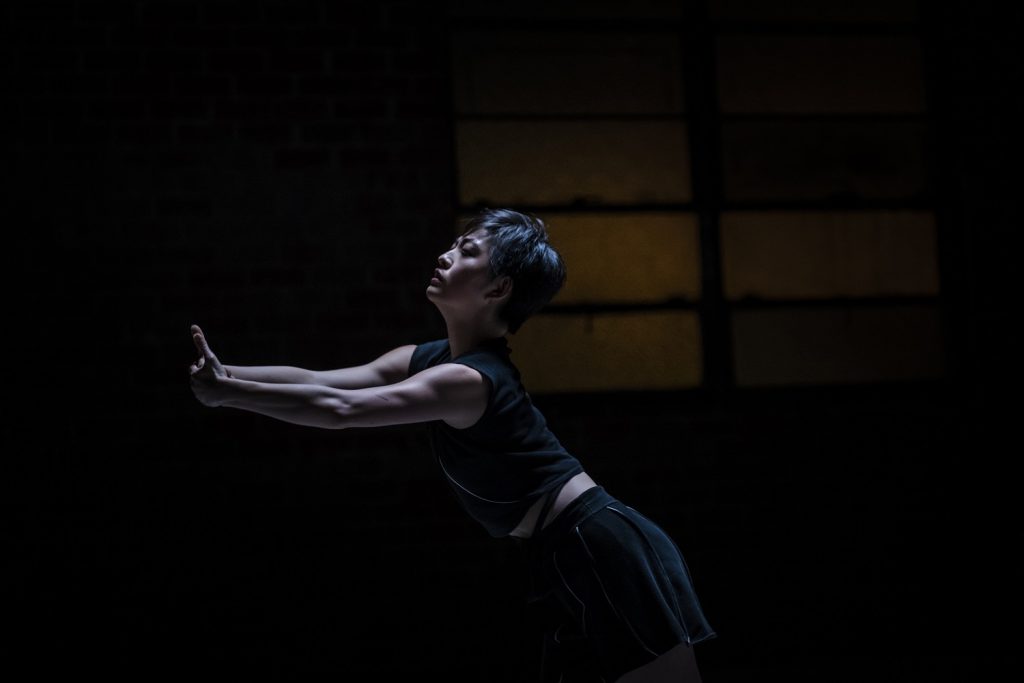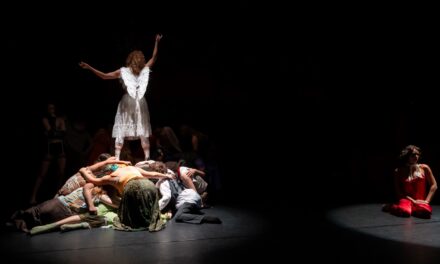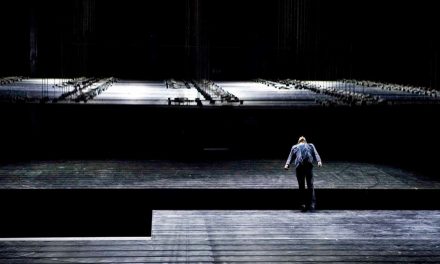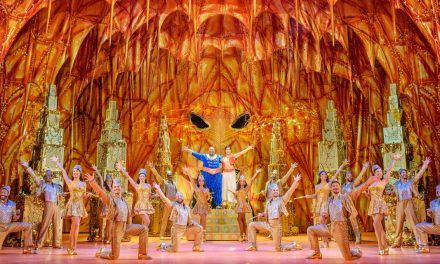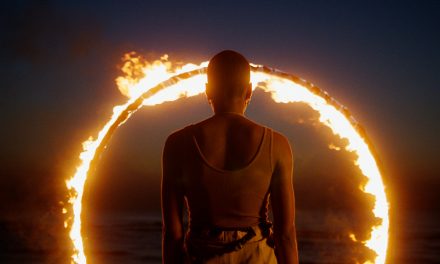On January 12, L.A. Dance Project premiered artistic director’s Benjamin Millepied’s I fall, I flow, I melt at their studio just outside of the city’s Downtown Arts District to Johann Sebastian Bach and David Lang’s music. Presented as a non-sequel to his Bach Studies (Part 1), Millepied’s 75-minute production was able to highlight many of the emotions and the crescendo’s in his composition and showcase the company member’s abilities. However, the choreography, though natural, is not particularly new or refreshing and often ventures into repetitive movement phrases. Much of the performance’s more impactful moments rest upon the individual execution of each dancer, or even more prominently, in short pas de deuxs, some of which work, and some of which don’t.
For the show, 2245 (their studio, named after their address) is stripped bare. The center is squared off by simple lighting panels (designed by Millepied), which the dancers remove and manipulate along the floor throughout their performance. Small groupings of wooden benches and bleachers line all four sides, wherein audience members can sit only a few feet away from the action.
Twelve dancers dressed in black and white (costumes designed by Alessandro Sartori for Ermenegildo Zegna Couture) enter with metal-framed chairs. Following them is violinist Étienne Gara, LA’s Delirium Musicum Chamber Ensemble’s artistic director. The chairs are placed in a circle and as he begins to play Bach’s Partita for Violin No. 2 in D Minor, the group rises from their seats and begins to move within their shrunken dance space; flowing, fainting and interlocking in a chaotic flurry.
The ensemble goes back and forth between performing independently from one another and synching their movements together—sweeping motions pull them apart, whereas upward extensions and downward swoops denote shared moments of prayer and praise, which plays upon some of the religious undertones in Bach’s music.
Many of the group dances take on a similar contemporary freeform format, save the finale, which has more structure to it. Different moments throughout the evening emphasize either a more romantic interpretation of the classical soundtracks or a tragic one, especially when a segment of a recording of St Matthew Passion plays. The choreography takes its cue from the music, even when the moves don’t perfectly match each note. Despite the similarities, not all the transitions throughout the show are smooth.
Scattered scenes full of solos and duets come out of nowhere but provide a real opportunity for some of the individual company members to shine and elaborate upon their chosen roles in the introduction. First up is Aaron Carr, who rises from a fetal position in the center of the circle after his peers move their chairs along the back wall of the dance space and sit like spectators ready to watch him perform.
Carr’s movements are a happy derivative of his role in the group dance. Skipping and leaping become his primary means of travel throughout the space, which he fills up easily with his celebratory turns and spins, bringing a joyful perspective to Bach’s soundtrack through his light footwork. His steps become repetitive after he takes the floor again later in the evening as Gara plays Lang’s Mystery Sonatas: Joy, Glory, Sorrow. During this later scene, Carr mixes in crawling scenes toward and away from the lighting panels, which are arranged into rounded circles in the center of the floor, creating a symbolically obsessive relationship with the light and adding more meaning to his dance. Although he can establish a recognizable personal style of expression, the lack of variety, especially in his first solo, dulls the impact of his dancing.
Other standout performers include Patricia Zhou. Her tango-like performance with David Adrian Freeland, Jr. expanded Bach’s Partita, emphasizing the romantic overtones throughout the music and keeping up with the music’s pace in a way that is organic and maintains the spirit of Millepied’s goal to break away from any constricting ties to the melody. Zhou’s role is underplayed in the later sections of the production, but her every contributing whirlwind of movement on stage adds life to the piece.
Freeland’s soulful presence throughout the piece often add the most amount of drama, especially through his rolling shoulder blades and the slow unfurling of his arms when he takes center stage. His later duet with Janie Taylor, though brief, recalls the power both carry as Romeo and Juliet in LADP’s rendition of the famous ballet, which premiered at the end of last year. However, his shining moment comes later when he performs quartets with the rest of the men in the company—Carr, Doug Baum, Anthony Lee Bryant, Mario Gonzales, and Nathan Makolandra—who stands out from the rest through his smooth delivery in a passionate duet with Gonzales. Their segment was more powerful than that of Zhou, Taylor, Madison Hicks, Daisy Jacobson, Rachelle Rafailedes, and Gianna Reisen. Though talented, the ladies’ group combinations and pairing do not carry the same power as that of the men, at least not on January 13, when I went to see the performance.
Although Millepied’s choreography isn’t new, it is interesting to see how each dancer interprets and applies nonrestrictive patterns of movement to the classical genre of music. Getting a glimpse at the inside of 2245 is also a fun treat that encourages a more intimate look at the inner workings of one of LA’s more steadily growing dance companies.
L.A. Dance Project will perform I fall, I flow, I melt every evening at 8pm through Sunday, January 20 at their studio located on 2245 E. Washington Blvd.
For more information on L.A. Dance Project and to purchase tickets, click here.
Featured image: L.A. Dance Project – I fall, I flow, I melt by Benjamin Milleped – dancer, Anthony Lee Bryant – musician, Etienne Gara – Photo: Jonathan Potter

